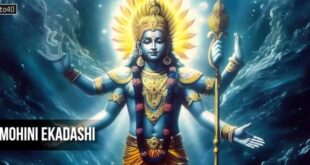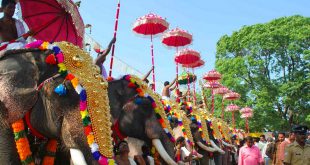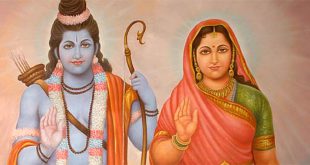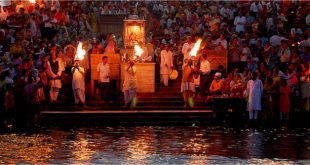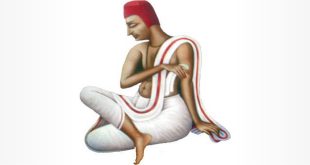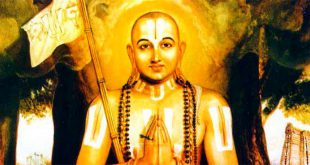Kala Bhairava Jayanti is a Hindu festival dedicated to Lord Kala Bhairava, a fierce manifestation of Lord Shiva. It is observed on the eighth day of the Krishna Paksha (waning phase of the moon) in the Hindu month of Margashirsha, which typically falls in November or December. Kala Bhairav Ashtami is also known as Bhairav Ashtami, Bhairava Jayanti, and Kala-Bhairava Ashtami. It is a holy day commemorating the birthday of Lord Bhairava, the fierce manifestation of Shiva.
Kala Bhairava Jayanti: Date
- 2024: 22 November, 2024 [Friday]
- 2025: 12 November, 2025 [Wednesday]
- 2026: 01 December, 2026 [Tuesday]
Kala Bhairava is considered the guardian of time, and devotees believe that worshipping him helps in overcoming fears, protecting from evil, and ensuring success and prosperity. According to a legend the Trimurti i.e. Lord Brahma, Lord Vishnu, and Lord Mahesh were discussing as to who was superior of them all. In the heated debate, Shiva felt offended by the remarks made by Brahma and commanded Bhairava to sever one of Brahma’s five heads. Bhairava obeyed Shiva s orders. Thus Brahma became four-headed. Bhairava s sin of Brahmahatya was expiated when he reached the holy city of Varanasi after wandering throughout the world. There are many temples in Varanasi dedicated to Lord Bhairava.
The rituals for Kala Bhairava Jayanti are elaborate and filled with devotion.

Here are the key rituals performed on this day:
Fasting (Vrat):
Devotees observe a strict fast from sunrise to sunset. Some may choose to observe a partial fast by consuming fruits and milk, while others may opt for a complete fast without any food or water.
The fast is broken only after performing the evening puja and offering prasad (sacred food).
Puja (Worship):
Devotees wake up early and take a holy bath, preferably in a sacred river or at home with water mixed with Ganga Jal (water from the Ganges).
The puja area or altar is cleaned and decorated with flowers, oil lamps, and incense sticks.
A statue or picture of Lord Kala Bhairava is placed on the altar.
Offerings:
Offerings include black sesame seeds, mustard oil, flowers (especially red and black flowers), and sweets like ladoos and jaggery.
Alcohol, particularly liquor, is also offered in some traditions as it is believed to appease Lord Bhairava.
Mantra Chanting and Hymns:
Devotees chant specific mantras and hymns dedicated to Kala Bhairava, such as the Kala Bhairava Ashtakam and Bhairav Kavach.
Reciting the Bhairav Stotra is also considered highly auspicious.
Special Havan (Fire Ritual):
Some devotees perform a Havan, where offerings like ghee, sesame seeds, and specific herbs are made to the sacred fire while chanting mantras.
This ritual is believed to invoke the blessings of Lord Bhairava and purify the environment.
Feeding Dogs:
Dogs, considered the vahan (vehicle) of Lord Bhairava, are fed with milk, sweets, and specially prepared food. This act is believed to bring good fortune and please the deity.
Temple Visits:
Visiting temples dedicated to Lord Bhairava, especially in places like Ujjain, Varanasi, and Tamil Nadu, is common.
Special pujas and abhishekams (ritual bathing of the deity) are performed in these temples.
Night Vigil:
Some devotees stay awake all night, singing bhajans (devotional songs) and participating in kirtans (devotional chanting).
Staying awake is believed to be a form of penance and devotion.
According to Hindu mythology, Lord Shiva took the form of Kala Bhairava to cut off the fifth head of Lord Brahma, which symbolizes the destruction of ego. This act also established Kala Bhairava as the protector of the holy city of Varanasi.
By worshiping Lord Shiva in the form of Kala Bhairava one can get rid of all misfortune. The devotee enjoys all round success and is exempted from his sins. Lord Bhairava, Shiva and his consort Parvati are worshiped with flowers, fruits and sweets. Dogs (vehicle of Lord Bhairava) are also fed milk and food. Dead ancestors are remembered and offered oblations on this day. Devotees observe fasts and perform special pujas. Temples dedicated to Lord Bhairava, especially in Ujjain, Varanasi, and Tamil Nadu, see significant festivities. Offerings such as black sesame seeds, oil, and special sweets are made to the deity.
Devotees chant mantras and hymns dedicated to Kala Bhairava, and processions with the deity’s idol are common. Many also perform “Bhairav Havan” (a fire ritual) to seek blessings.
The Shaivites take a ritual bath in the morning and perform Puja. Devotees fast throughout the day and perform Jagran at night. Kaal bhairav Katha is recited by the devotees. They also perform Bhairav Aarti at midnight along with traditional musical instruments. A huge function is organized at Bhairav Prasad Temple in Vaishno Devi every year. In Varanasi, lots of cultural programs and prayers are observed.
 Kids Portal For Parents India Kids Network
Kids Portal For Parents India Kids Network

